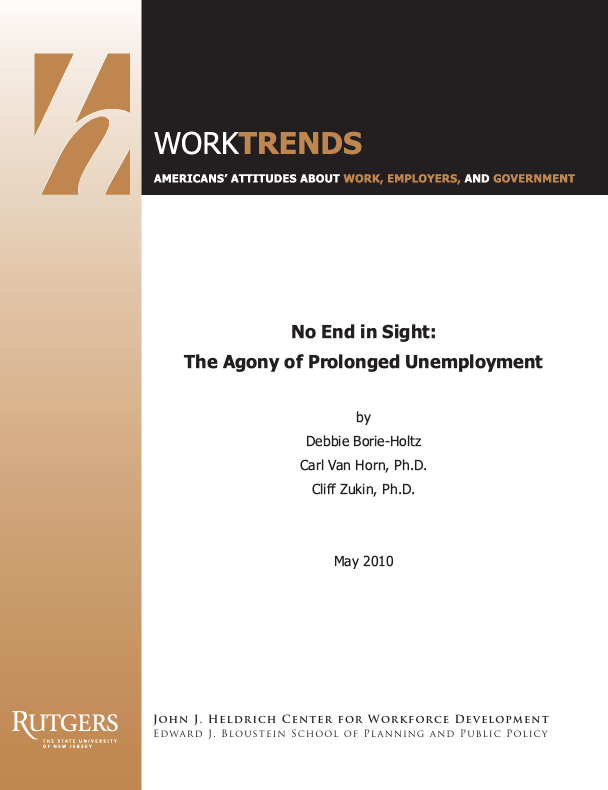In August 2009, the John J. Heldrich Center for Workforce Development at Rutgers, The State University of New Jersey, working with Knowledge Networks and its online nationally representative probability sample, conducted a survey of 1,202 men and women who had been unemployed at some point in the previous 12 months. Three-quarters were unemployed at the time of the survey, one in five had found new employment, and the other 5% had left the labor force. We asked those who were without work how they had come to lose their jobs; how they were coping economically, socially, and emotionally; and what they were doing to find a new job.
We returned to take a second look at this group in March 2010, a little more than half a year later. We successfully completed follow-up questionnaires with 908 of the original group, a panel completion rate of 76%. There was no significant difference between the 908 successfully re-interviewed and the 294 not filling out a March 2010 survey.
The first section of this report shows the labor force paths they took and where they are today, along with a profile of who has become reemployed. The second section looks in detail at this group. We are interested in how many have been able to find employment, how long it took them, what job-hunting strategies they found successful, the sacrifices they had to make to become reemployed, and how they feel about their new jobs. The next section focuses on those who remain unemployed another half year later. We examine what they have been doing to get by in a prolonged condition of unemployment, and look at the financial, social, and emotional effects on them and their families. The report concludes by presenting data on the role of government in this area.

